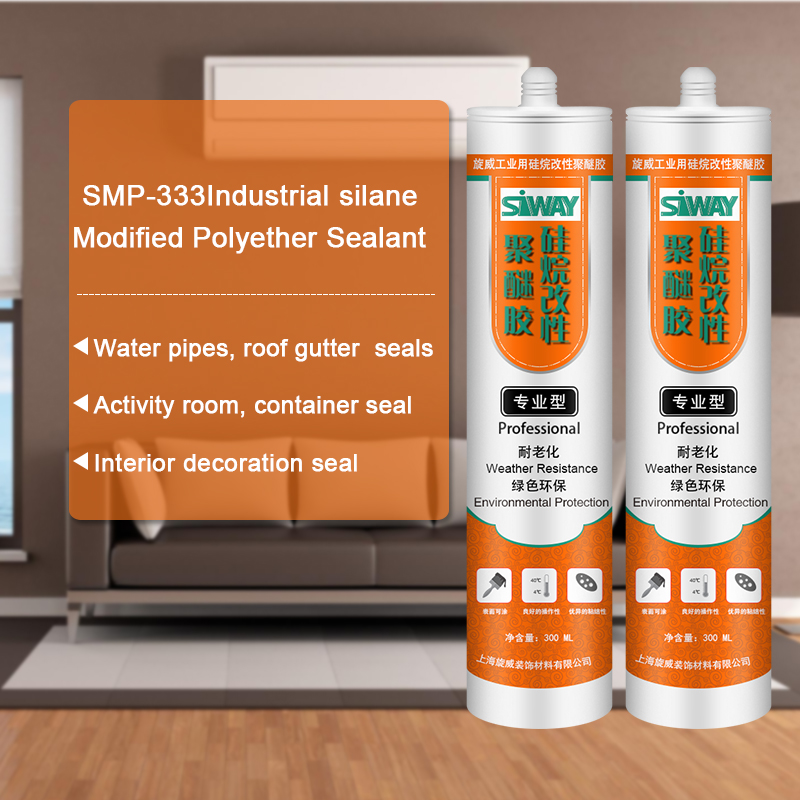Factory source manufacturing SV-888 Weatherproof Silicone Sealant for Turkey Manufacturer
Short Description:
Description SV-888 silicone weatherproof sealant is one component, neutral cure silicone sealant, designed for glass curtain wall, aluminum curtain wall and building exterior design, has excellent weathering properties, it can form durable and most building materials, waterproof and flexible interface. Key Features 1. 100% silicone 2. Medium modulus (25% movement capability) 3. UV resistance & weatherproof 4. Primerless adhesion to most building materials Basic Application 1.All ...
We have advanced equipment. Our products are exported to the USA, the UK and so on, enjoying a good reputation among customers for Factory source manufacturing SV-888 Weatherproof Silicone Sealant for Turkey Manufacturer, We fully welcome customers from all over the world to establish stable and mutually beneficial business relationships, to have a bright future together.
Description
SV-888 silicone weatherproof sealant is one component, neutral cure silicone sealant, designed for glass curtain wall, aluminum curtain wall and building exterior design, has excellent weathering properties, it can form durable and most building materials, waterproof and flexible interface.
Key Features
1. 100% silicone
2. Medium modulus (25% movement capability)
3. UV resistance & weatherproof
4. Primerless adhesion to most building materials
Basic Application
1.All kinds of glass curtain wall weatherproof seal
2.For metal (aluminum) curtain wall, enamel curtain wall weatherproof seal
3.Joint sealing of concrete and metal
4.Roof joint seal
Technical data sheet
| Test standard | Test project | Unit | value |
| Before curing——25℃,50%R.H. | |||
| GB13477 | Flow, sagging or vertical flow | mm | 0 |
| GB13477 | Operating time | min | 10 |
| GB13477 | surface drying time(25℃,50%R.H.) | min | 20 |
| Deep curing | mm/day | 1-2 | |
| Sealant curing speed and operating time will have different with different temperatures and temperature, high temperature and high humidity can make sealant curing speed faster, rather low temperature and low humidity are slower.21 days after curing——25℃,50%R.H. | |||
| GB13477 | Durometer Hardness | Shore A | 28 |
| GB13477 | The ultimate tensile strength | Mpa | 0.65 |
| Temperature stability | ℃ | -50~+150 | |
| GB13477 | Movement capability | % | 25 |
Certification
GB/T 22083-G-35;ASTM C920
Color
Black, white, grey
Package
300ml in cartridge * 24 per box, 590ml in sausage *20 per box
Shelf life
12 months
Note
If you want the TDS or MSDS or other details, please contact with our sales person.
“Sealant” is a substance used to block the passage of fluids through the surface or joints or openings in materials, a type of mechanical seal. In building construction “sealant” is sometimes synonymous with “caulking” and also serve the purposes of blocking dust, sound and heat transmission. Sealants may be weak or strong, flexible or rigid, permanent or temporary. Sealants are not adhesives but some have adhesive qualities and are called “adhesive-sealants” or “structural sealants”.
Sealants were first used in prehistory in the broadest sense as mud, grass and reeds to seal dwellings from the weather such as the daub in wattle and daub and thatching. Natural sealants and adhesive-sealants included plant resins such as pine pitch and birch pitch, bitumen, wax, tar, natural gum, clay mortar, lime mortar, lead, blood and egg. In the 17th century glazing putty was first used to seal window glass made with linseed oil and chalk, later other drying oils were also used to make oil-based putties which were often referred to as “caulks”. In the 1920′s polymers such as acrylic polymers, butyl polymers and silicone polymers were first developed and used in sealants. By the 1960′s synthetic-polymer-based sealants were widely available.
Sealants, despite not having great strength, convey a number of properties. They seal top structures to the substrate, and are particularly effective in waterproofing processes by keeping moisture out the components in which they are used. They can provide thermal and acoustical insulation, and may serve as fire barriers. They may have electrical properties, as well. Sealants can also be used for simple smoothing or filling. They are often called upon to perform several of these functions at once.
Wiz Science™ is “the” learning channel for children and all ages.
SUBSCRIBE TODAY
Disclaimer: This video is for your information only. The author or publisher does not guarantee the accuracy of the content presented in this video. USE AT YOUR OWN RISK.
Background Music:
“The Place Inside” by Silent Partner (royalty-free) from YouTube Audio Library.
This video uses material/images from https://en.wikipedia.org/wiki/Sealant, which is released under Creative Commons Attribution-Share-Alike License 3.0 https://creativecommons.org/licenses/by-sa/3.0/ . This video is licensed under Creative Commons Attribution-Share-Alike License 3.0 https://creativecommons.org/licenses/by-sa/3.0/ . To reuse/adapt the content in your own work, you must comply with the license terms.
The first earmould silicone particularly for the filling of cast forms, for the fabrication of soft earmoulds. Low extrusion pressure, no bubble formation in the casting stage (no pressure pot required) due to optimized flow properties. No adhesion to the cast
form, reduced surface tension enables easy removal. Highest detail reproduction, tear- & tensile strength with high elastic recovery. Long-term wearing comfort due to soft flexible fitting, skin-friendly & biocompatible. Working time approx. 2:30 min., 50 & 70 Shore A. New filler matrix provides maximum transparency.


